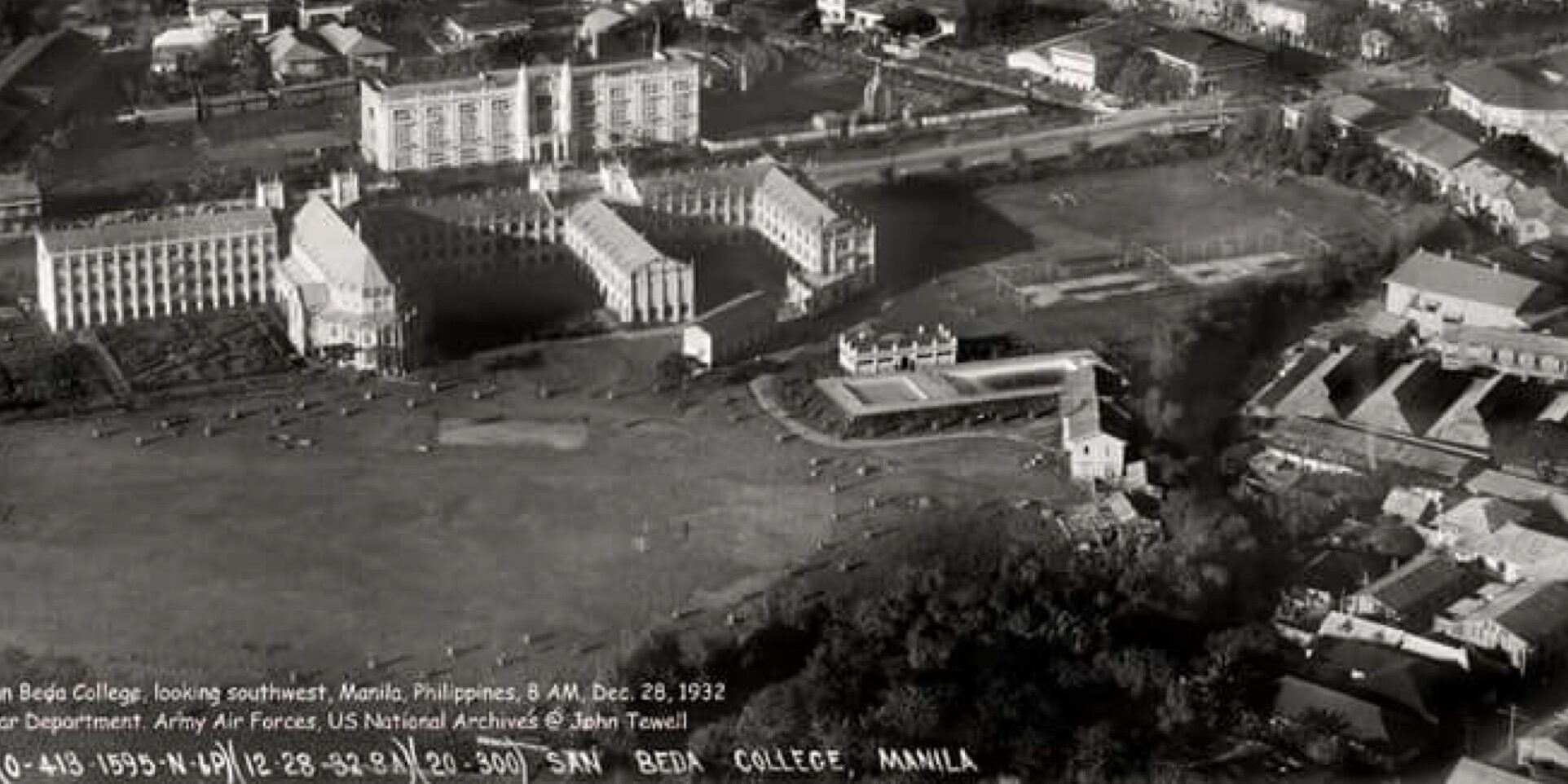The growth spurt in the 1920’s was blunted by the 1930’s “Big Crash”, with the wealth base of the economic elite swiftly eroded by the crumbling world economy. Rector Fr. Bernardo Lopez acted decisively to manage the crisis as the previous decade’s sterling growth was gained at the cost of heavy loans. Severe austerity measures were put in place while simultaneously expanding the enrollment base.
In genuine Christian sensitivity to the economic blight of the parents, tuition and other fees were reduced. “It was a great moral act, an act of compassion”, a parent remembered. The financially difficult times shaped a cadre of captains of industry – the Cabarrus brothers, the Delgados, the Nietos, Antonio Roxas Chua, Leocadio de Asis, and others.
San Beda won the NCAA basketball crown in three consecutive years (’34, ’35, ’36). The swimmers won the NCAA and PISA (Philippine Islands Swimming Association) championships. The pentathletes and other teams also had their share of triumphs.
The extended decline in the world economy and the high financial cost of the expansion of the campus combined to severely strain the purse of San Beda. Vital assistance was extended by the Benedictines from the U.S.A. who sent a delegation of three to Manila. One of them, Fr. Boniface Axtman was appointed rector in 1941. He is the sole American rector in the annals of San Beda.
Abbot Alcuin Deutsch, president of the Benedictine St. John’s University in Minnesota, was appointed apostolic administrator of the Manila Benedictine community and of San Beda.
World War II and the Bedan Heroes
Whatever hopes and plans there were for this era went up in smoke as the Second World War broke out. With the Japanese attack on Pearl Harbor on 8 December 1941, the Philippines was immediately drawn into the conflict. The Filipino youth, many Bedans among them, trooped to mobilization centers. War survivors had many accounts of individual heroism by Bedans, identified through their tribal badge of Bedan and Red Lion. Tony de Gracia (Class of 1941) told of Bedan “units” who stayed together and fought in groups. One such unit never surrendered and held their position until enemy infantry overran them.
Three days after the attack at Pearl Harbor, San Beda was used by the American Quartermaster Corps until they evacuated to Bataan. When the Japanese Imperial Army entered Manila, San Beda’s main building was again used as headquarters and depot. The three American priests were hauled to the concentration camps in Los Baños, Laguna. They avoided a planned massacre and survived. By the war’s end, the campus was used by the 60th U.S. Army Field Hospital. St Bede’s Hall was not damaged as the artillery fire was aimed districts south of the Pasig River.
After an interruption in the early months of the war, San Beda was able to resume operations in July 1942, under restrictive and dangerous conditions. Financial survival was made possible not from tuition fees but from entrepreneurial activities.
Even in tough wartime conditions, San Beda was able to celebrate the Pista ng Santo Niño de Praga with a solemn high mass in the Abbey Church, a candlelit procession, hymns and prayers.
(Source: https://www.sanbeda.edu.ph/post/76/history-of-san-beda)





